Autumn is a wonderful time of year, and if you’re out and about in the Mecklenburg Lake District, you’re bound to go into raptures. The colourful foliage, the glitter of the sun in the countless lakes and many beautiful hiking trails – it’s worth exploring the area.
Hiking in autumn in the Mecklenburg Lake District – we have undertaken three great tours that we would like to present here.
Hike to the nature trail “Erbsland”- Arboretum near Granzow
Our first hike started not far from our accommodation. We hiked through the autumnal forest to the Erbsland Arboretum.

About 6 kilometres from Mirow, the Erbsland is hidden in the forest, with only a few signs to show the hiker the way. But with a map or our route planning, it is really easy to find.
Why the area is called Erbsland is no longer known exactly. Presumably, this was originally a pea-growing area; in any case, very old maps show open agricultural areas here.
In 1887, the head forester at the time arranged for the area to be afforested and planted with foreign tree species. He wanted to test in the arboretum (collection of various often exotic woody plants) which tree species might be suitable for German forestry. About 40 non-native plantings were made, creating one of the oldest German forestry trial areas in Germany.

After the death of the head forester, the planting was forgotten. He had never handed down the exact location. In 1905, the site was rediscovered and all the plants had to be identified again. During the Second World War, the area was declared a restricted zone. The Luftwaffe used the area for testing purposes. It was not until 1953 that the arboretum could be examined again. Today you can still find over 30 different tree species here.
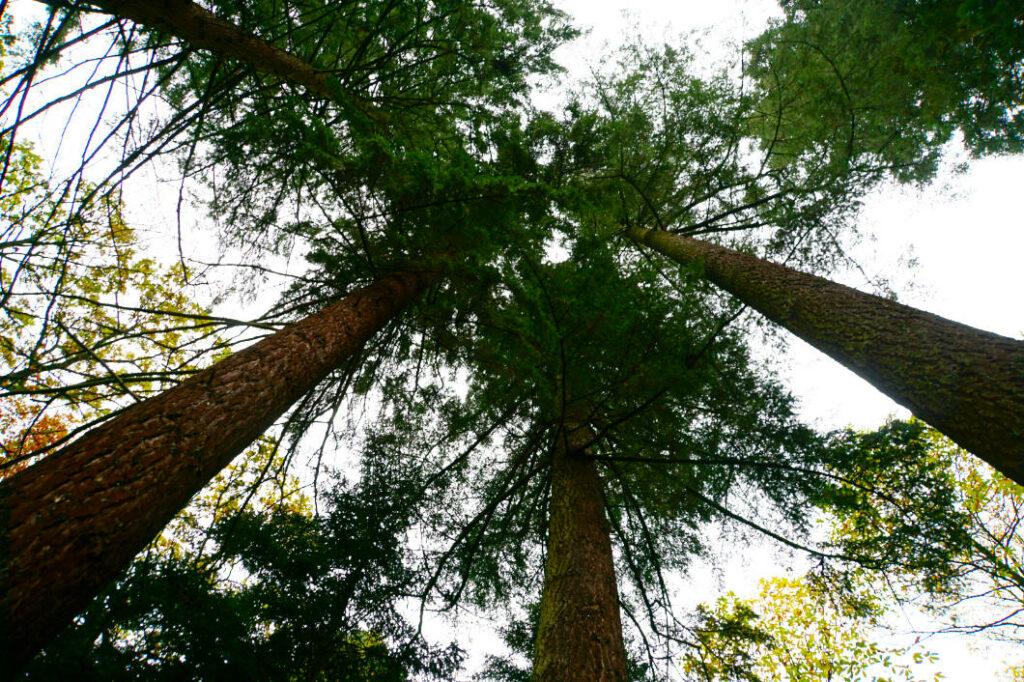
I was very amazed at the height that some trees have reached in the meantime. For example, there is a Douglas fir over 42 metres high. Paths lead through the area with small information signs about the different plants. Even in autumn you can discover a lot here and I think it’s worth a visit.
In search of a Lost Place
We hiked on from the Erbsland to a hidden highlight of the surrounding forest area. Here are the “white houses”, a “lost place” in Mecklenburg-Vorpommern (but noted on many maps).
The way to the area is not signposted. I would also like to expressly point out not to search the area on the off-chance – the forests are still riddled with ammunition remnants in large areas. Signs repeatedly point this out.

We were travelling in company and so we were shown a trail that brought us closer to our destination. It would never have occurred to me to go off the trail, because the “white houses” served as an approach target for the air force for many years.

The houses were test buildings erected during National Socialism on the occasion of the planning of Germania. Four towers about 20 metres high made of reinforced concrete, which are no longer white, stand there. Originally, the buildings probably had a white clinker facade, of which, however, nothing can be seen today. Bombing tests were carried out here, and attempts were made to improve building materials and forms. More details are not known, but there are speculations that high bunkers were tested here for the accommodation of the Berlin civilian population.
I have to admit that it was not only the uneasy feeling of walking among ammunition dumps, but also the sight of the buildings that made me feel uneasy. Especially a concrete block with an impressive crater showed me the enormous explosive power that was tested here in the middle of the forest.

How good that we didn’t stay here too long. After all, we still had the goal of looking for mushrooms for our dinner.
Mushroom picking in autumn in the Mecklenburg Lake District
I have never picked mushrooms before and don’t know anything about them at all. My enthusiasm “I found a mushroom” was always destroyed by the sentence “you can’t eat it”. Yet the mushrooms often looked so beautiful!

Okay, with this one I also knew that you shouldn’t eat it.

But we found them anyway.
Mushroom picking in autumn in the Mecklenburg Lake District is worthwhile! There are areas here where you can find mushrooms in the right weather and gather your food. Chanterelles and porcini mushrooms grow, for example.

One more little tip!
We were almost alone on our autumn hike in the surroundings of Granzow. Several times, deer with huge antlers crossed our path. Well, actually they ran away from us. So if you walk quietly, you will discover not only plants but also animals in the forests.

Nature discovery trail to the Unesco World Natural Heritage Site in Serrahn (Carpin)
Serrahn (Carpin) is an area in the Müritz National Park in the Mecklenburg Lake District and a small settlement of the same name located there.
In 2011, part of the Müritz National Park was declared a UNESCO World Natural Heritage Site. There are old beech forests here that are unique.
The starting point of our hike was at the Zinow hiking car park. From here, our path led us along the nature adventure hiking trail to the small village of Serrahn to the nature photographer Roman Vitt and from there back to the car park of our car via the only access road to the village. The route is about 10 kilometres long.
But let’s start at the beginning of our hike.

The path led us through one of the last beech forests in Europe. Here, in the beech forests, the development of forest wilderness in Europe is clearly evident. The original forest landscape is still well preserved and nature can thrive here without human intervention.

During the hike, small signs point out points of interest in the nature worth seeing. Here you can still find mushrooms in winter, which is related to the soil conditions there. If you listen carefully, you can hear the woodpeckers knocking – tack tack tack went the rhythm we listened to on our autumn hike in the Mecklenburg Lake District.

We reached the small village of Serrahn (Carpin) via a footbridge that led us through a moorland area. On the footbridge, small information boards showed us what plants could be found in the moor.
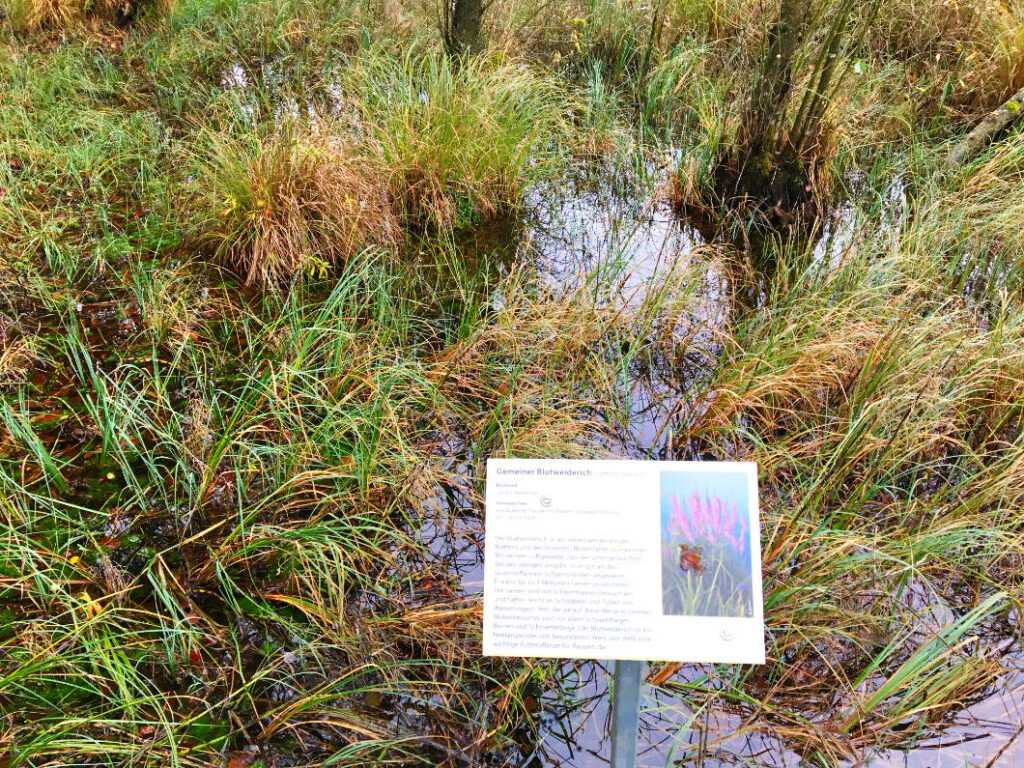
In Serrahn we met the nature photographer Roman Vitt, who lives here and rents out two beautiful holiday flats. And to be honest, the view from his terrace into this beautiful nature made me a little wistful. Living like this is really beautiful!

We learn that many of his photographs, some of which can also be seen free of charge in a small annexe, were taken here. The nature reserve is a true source for a photographer – but you have to bring quiet and time with you to get lizards, snakes, the kingfisher or the blue moor frog in front of the camera, for example. If you love beetles, you will find over 800 different species in the area and countless bird species have their home here. But the flora is also varied and diverse here in the core zone of the nature reserve. We were also able to discover this in autumn and took out our camera again and again during our hike.

The video not only introduces the nature photographer Roman Vitt, but also shows dreamlike shots from the national park.
Before we left Serrahn, we followed the tip and made a short detour to Lake Schweingarten. A hiking trail leads from Serrahn to the lake, which is also easy to cycle along. The view of the lake was simply beautiful and definitely worth the diversions!


Then we went back along the unpaved access road that leads from the village to our car park. It is very unlikely that a car will drive past you here. Only residents and residents of the holiday flats are allowed to drive their cars through the nature reserve.
The way back was beautiful, dusk was slowly setting in. It was a pity that no animals crossed our path, but we were probably too noisy for that, our conversation still revolved around the visit to Serrahn and the idea of coming here at another time of year and taking part in a course on nature photography.
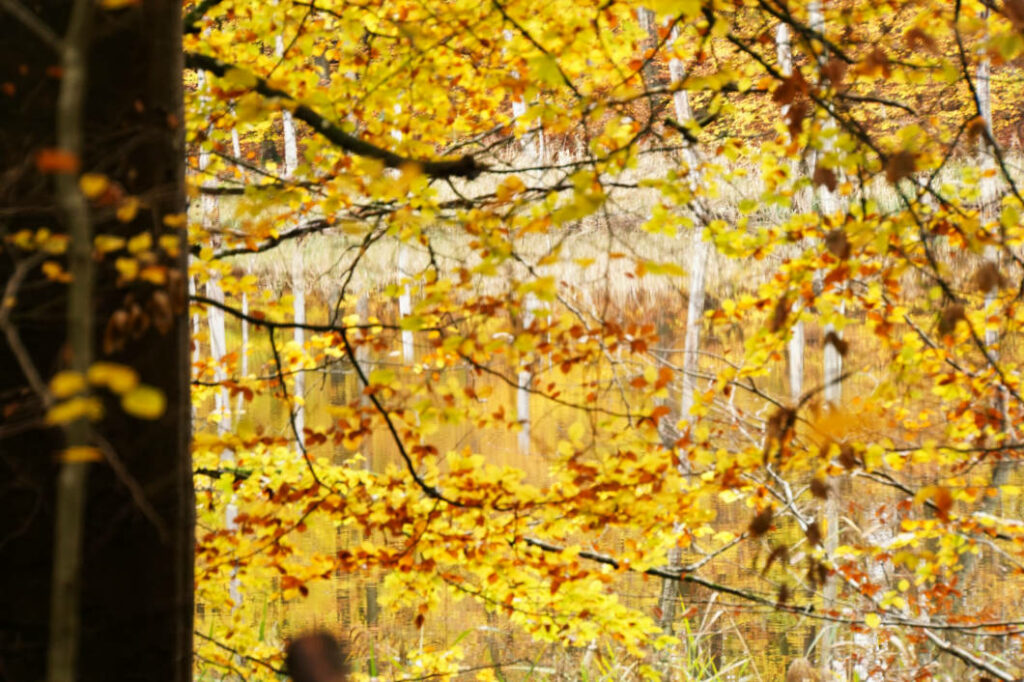
A small tip: If you like to eat well after your hike, you should stop at the “Wild Wasser”. We had a very good meal here.
Hike around the Wummsee
Our third autumn hike in the Mecklenburg Lake District took us to Lake Wummsee. The lake is located in the north of Brandenburg on the border to Mecklenburg-Western Pomerania.
We parked the car at the “Grüne Hütte” car park. From here we first walked a few metres along the road until we discovered the entrance to the circular hiking trail on the other side of the road (about 10 km long).
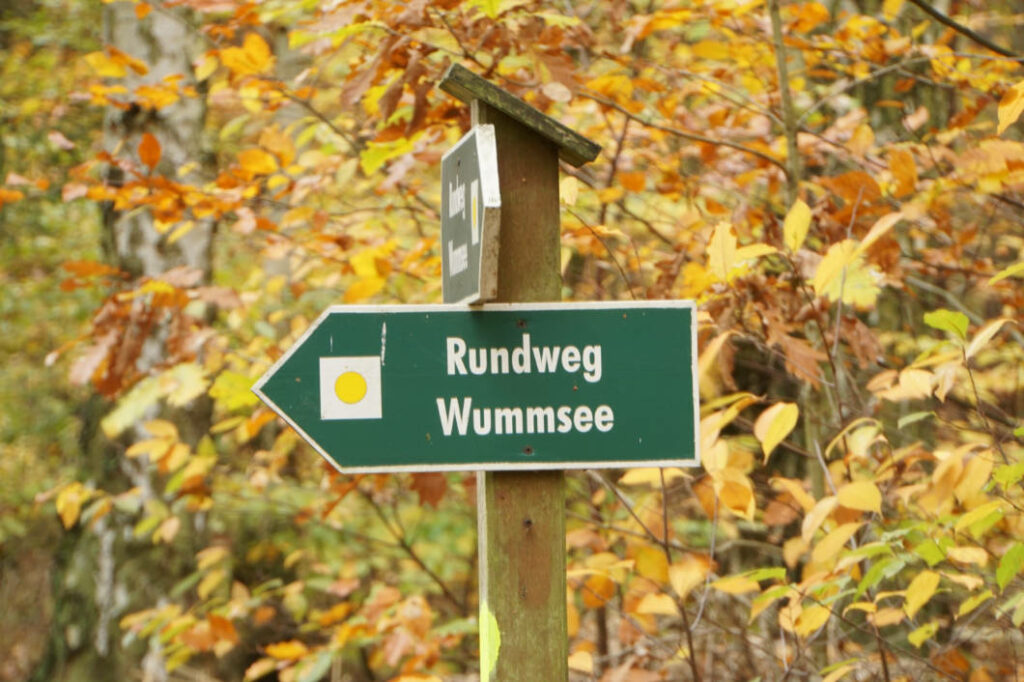
We had decided to go around the lake in a counter-clockwise direction. There were some signs and trail markers along the way (yellow circle on white background and spray-painted neon-coloured dots) that we could follow.
Otherwise, it was just us and the birds. We walked lonely through the end moraine landscape with the partly steep shore area of the lake. According to Wikipedia, Lake Wumm is up to 35 metres deep and part of a nature reserve.

During our hike, the sun shimmered through the foliage of the forest and every now and then the sunbeam glittered in the lake. There are a few small islands in the lake, which can be seen through the overgrown embankment.

First we walked along the Great Wummsee, then we reached the Small Wummsee. Here it is a bit boggy and wooden footbridges lead across the bog to the other side of the lake. On the western shore of the lake we passed the Maronenstein. This memorial stone was erected here for a head forester.

The hike along the lakeshore was very beautiful. Unfortunately, you can only get directly to the shore in a few places. But you walk through an area with old trees (many beech trees) and if you look closely, you can discover traces of wild boars along the way and also find one or two mushrooms.
After 10 kilometres we finally reached the road again and after a few metres we were back at our car.
After the hike, we can recommend a visit to the Seehof restaurant in Rheinsberg. We had an excellent meal there.















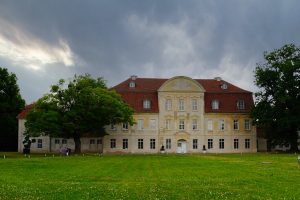

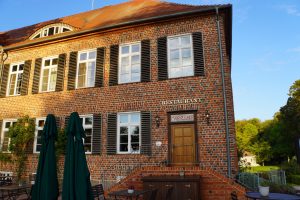




Leave a Reply